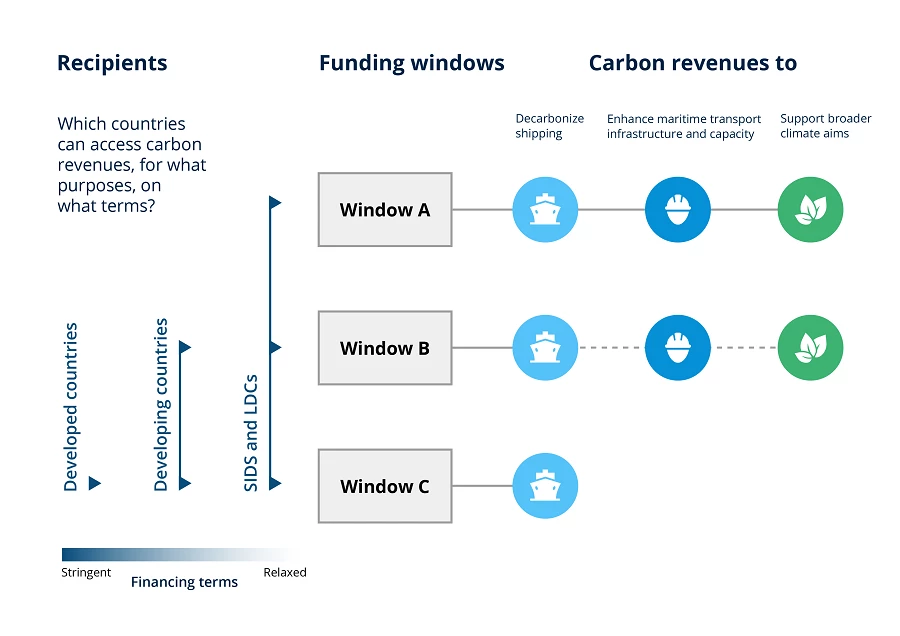
Download the new report: Distributing Carbon Revenues from Shipping
The backbone of worldwide trade, international shipping moves more than 80 percent of global trade by volume. As a result, international shipping accounts about three percent of global greenhouse gas emissions. Unless shipping moves to zero-carbon fuels and innovative technologies to green its energy footprint, the latest estimates suggest that carbon emissions will grow by 90-130 percent by 2050, as compared to 2008 levels.
The International Maritime Organization (IMO), a UN agency, aims to cut those emissions as soon as possible, with a goal of halving them (as compared to 2008 levels) by 2050. Member states are currently revising shipping’s climate ambition to set a course consistent with the temperature goals of the Paris Agreement.
To do that, the IMO is focusing on energy efficiency, new zero-carbon fuels and technologies, and ways to make these changes cost effective and equitable for countries. Putting a price on carbon emissions is one way to do that. It can help to reduce GHG emissions and – as a by-product – generate revenue. Estimates show that, in shipping alone, putting a price on carbon could raise $40 to $60 billion dollars each year between 2025 and 2050.
So how could this money be put to work?
- It could be used to speed decarbonization in the shipping industry, which will require trillions of dollars in investment. Carbon revenues could finance and then accelerate shipping’s move away from fossil fuels. There is a great need for investment in zero-carbon fuel production and in maritime infrastructure – including efficient ports – that promotes decarbonization, provides development opportunities, reduces transport costs, and builds resilience in the face of extreme global events.
- Reinvesting carbon revenues into port infrastructure can help lower the costs of final delivered products – including food and other essential supplies. Transport costs add up: in Sub-Saharan Africa, for example, transport costs can represent up to 50% of food prices, and over a third of the food produced in Africa is lost due to poor logistics. Investing carbon revenues in improving ports – and their linked transport - can help make logistics more efficient and resilient. Ultimately, reducing time in transport can help to offset the cost of a carbon price on shipping in developing countries.

- Just as importantly, the money could be used more broadly, beyond the shipping industry, to help nations and industries mitigate and adapt to climate change. Especially for countries most vulnerable to climate change, such as Small Islands Developing States (SIDS) and Least Developed Countries (LDCs), broadening the use of revenues beyond maritime decarbonization addresses equity concerns since very often their ability to spend within the maritime transport sector is limited. Making sure that the transition to zero-carbon shipping leaves no country behind is central to the debate about next steps.
SIDS, and LDCs -countries most at risk from climate change – should get more in the way of help from carbon revenues. These countries would benefit from a dedicated portion of carbon revenues. There is a big gap between the climate finance provided and the estimated climate needs of those countries. On top of that, the most vulnerable countries often struggle to access climate finance due to lack of capacity.

At the World Bank, we believe that a smartly designed distribution framework for carbon revenues can deliver on the twin goals of maximizing climate benefits and ensuring an equitable transition for countries, especially for the most vulnerable.
A new report, Distributing Carbon Revenues from Shipping, discusses which countries could access carbon revenues, for what purposes, and on what terms.




Join the Conversation